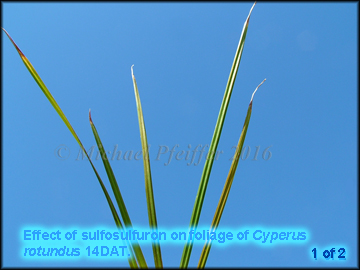
click for a larger image
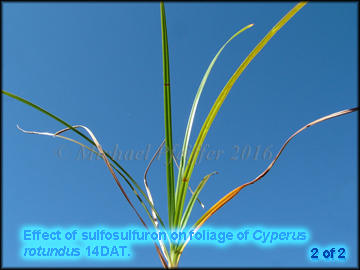
click for a larger image
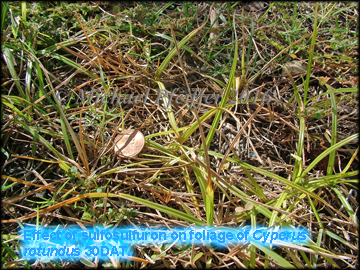
click for a larger image
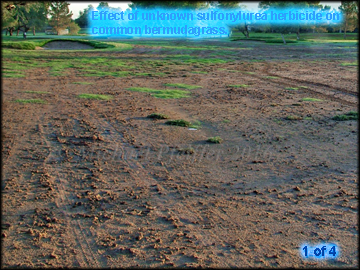
click for a larger image
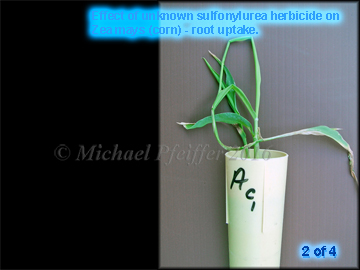
click for a larger image
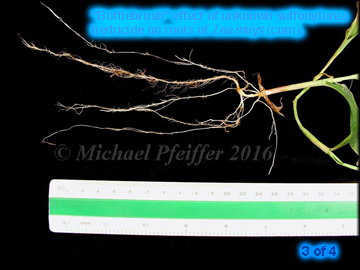
click for a larger image

click for a larger image
| Sulfonylurea Herbicides |
| There are more than 50 of these herbicides which have been discovered. Representative examples of these herbicides are: chlorsulfuron, metsufuron, nicosulfuron, sulfometuron and trifloxysulfuron.The sulfonylurea herbicides inhibit acetolactase synthase (same mode of action as imidazolinone herbicides) which is responsible for the production of the amino acids isoleucine, leucine and valine. Without these amino acids, certain proteins can not be produced and plants are doomed. These herbicides are taken up by both roots and shoots and used at very low rates. Selectivity varies greatly and pH of soils can affect persistence. Resistance is both problematic and increasing. |
| Symptoms on plants affected by these herbicides include cessation of growth (stunting), yellowing of shoot tips, yellowing between veins on leaves, purple coloration of foliage of dicot plants and death/browning of foliage. Roots of affected plants often have a "bottlebrush" appearance - lot of short lateral roots. |
| Photographs by Dr. Michael Pfeiffer |

click for a larger image |

click for a larger image |
|

click for a larger image |

click for a larger image |
|

click for a larger image |

click for a larger image |
|

click for a larger image |